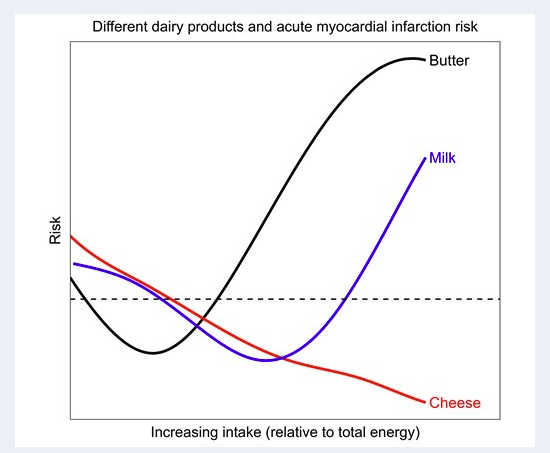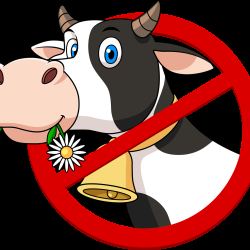Eating dairy products results in increased levels of LDL cholesterol (the "bad " kind) which in turn is felt to “fuel” cardiovascular disease – hence the recommendation to pursue a low-fat diet. A new study considers the important question of whether milk and cheese shorten your life.
The study consisted of 1,929 of our Norwegian brothers and sisters, all older than 18. All had some degree of coronary artery disease, specifically stable angina, for which dietary guidance was provided for “secondary” prevention – decreasing further heart injury. Dietary information on the participants came from our old friend, the food frequency questionnaire completed at the beginning of the study. This questionnaire drilled down into the nutritional category of dairy, which includes “milk, cheese, yogurt, cream, sour cream, ice cream, and butter.”
The cohort was predominantly male (80%), 62 years of age, half diagnosed with hypertension, and roughly a third with diabetes. 29% were active smokers! - a significant risk factor on its own for cardiovascular disease. Essentially, all were taking aspirin daily to keep the cardiologist away, and 77% took a beta-blocker for their hypertension.
During the roughly 8 to 14 years of follow-up, 16% had a myocardial infarction, 3% had a stroke, and 30% died; 43% of the deaths were cardiovascular.
The diet and the outcomes
The predominant dairy product consumed was milk, followed by cheese, yogurt, ice cream, and butter. Greater dairy consumption was associated with “lower relative” consumption of the bad, like red meat, and the good, like vegetables, fruits, and berries.
 Let’s begin with the bad news, the risk of further heart injury increased with the increasing consumption of butter and milk in the diet. But note that it was not a simple linear relationship; increasing butter and milk in the diet was, up to a point, beneficial (that dip below baseline risk in the graph) – everything in moderation.
Let’s begin with the bad news, the risk of further heart injury increased with the increasing consumption of butter and milk in the diet. But note that it was not a simple linear relationship; increasing butter and milk in the diet was, up to a point, beneficial (that dip below baseline risk in the graph) – everything in moderation.
Cheese, on the other hand, appears to be cardioprotective. The more you eat, the more your risk of secondary heart injury decreases. Of course, that risk reduction is based upon the cohort studied - cheese is beneficial if, in fact, you are a Norwegian male of about age 62 and possibly smoke.
Another anomaly to consider is that cheese production requires anywhere from 6 to 10-fold more milk by weight than the resulting product, i.e., cheese is calorie-dense compared to milk. But if milk is terrible in high amounts, and cheese has lots of milk, you might expect cheese to be “bad” too. So something about milk may have been modified in the cheese-making process. (Technically, cheese is a processed food, but is not “ultra-processed”)
What have we learned?
- Dairy is a monolithic category, and it should not be so when assessing health risks. Each dairy product may or may not elevate one’s cardiovascular risk.
- Reductionist approaches to diet, that is, categorizing foods into large groups, i.e., dairy, yield conflicting results and call into question many dietary guidelines.
- The effects of dietary intervention are “rather modest.” You cannot solely eat your way to health. This is especially true when we consider the substitutions we make when eating a nice piece of cheese and foregoing a salad.
Perhaps the best way to think about our diet is the same way we are advised to consider our finances, diversify, eat the rainbow of foods; and balance, eating moderately from all the wonderful foods available to us.
Source: The association between dairy intake and risk of cardiovascular disease and mortality in patients with stable angina pectoris European Journal of Preventative Cardiology DOI: 10.1093/eurjpc/zwac217

